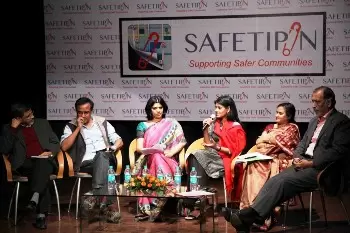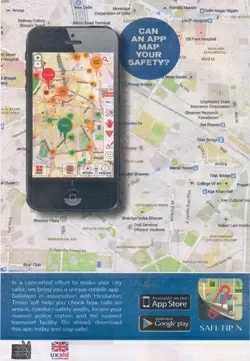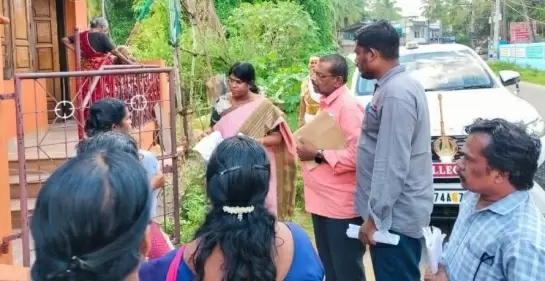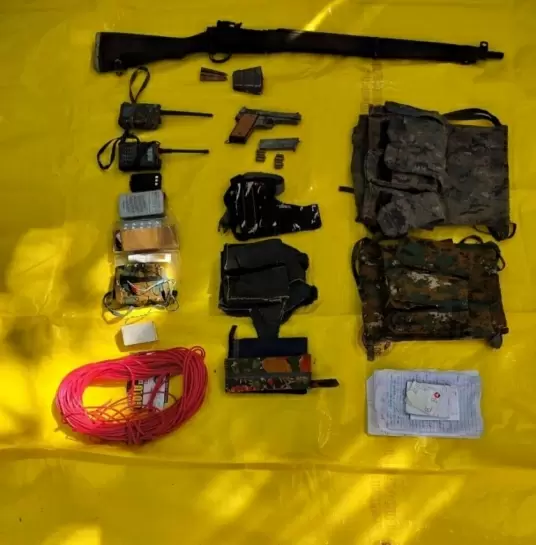SafetiPin means many things to women's security, it is a powerful tool, too
04-January-2014
Vol 5 | Issue 1
A novel mobile application, geared to making Delhi – and subsequently other cities in India – safer for women has been launched recently in the capital.
Called SafetiPin, the app has been designed by entrepreneur Ashish Basu and activist-researcher Kalpana Viswanath of Jagori, a women’s resource group and the force behind the Safe Delhi Campaign that has been focusing on ensuring a safer, more inclusive, city for women for nearly a decade now.
 |
|
At the launch of the SafetiPin mobile app, panelists talked about the need to use of technology to reach out to people in the efforts to reduce crimes against women
|
While the map-based app can be downloaded free on Apple and Android platforms, which constitutes “more than 70 per cent of the smart phone market”, a Windows 8 version is expected to be released soon.
Ever since the shocking December 16, 2012, gang rape incident forced the public as well as policy makers to recognise the very real threats that women and girls face, activism against gender violence has only become stronger.
The innovative use of information technology as a tool in this fight for women’s right to freely access and use public spaces has not only widened the reach of the movement but has also enabled women to safeguard themselves and seek assistance at the press of a button.
During the launch of SafetiPin, a panel comprising NIIT Chairman Rajendra Pawar, INTACH Delhi Convenor A.G.K. Menon, actor-activist Nandita Das, National Mission for Empowerment of Women Director Rashmi Singh, and musician Susmit Sen, spoke of the significance of a community-focused technology platform that would facilitate safety measures in tandem with the government and other service providers.
This latest mobile safety app works precisely on this principle - that community participation and engagement can make cities safer.
According to Viswanath, the brain behind the effort, “The idea came from the safety audits that have been conducted by Jagori and other groups. We wanted to take this tool and transform it in a way that would enable us to reach out to a much larger group of people.”
Why call it SafetiPin? The makers of the app explain the reasons behind this interesting name:
“The most obvious is that we show an audit score as a ‘pin’ on a map. Since the score is essentially a ‘safety’ score, it is a SafetiPin.
“The second reason is that in India traditionally women used the safety pin as a defence against harassment especially in crowded places. A jab in the flesh with a safety pin is often an effective deterrent to the roving hand.
“The third is that a safety pin is a symbol of something that holds fabric together – stops it from coming apart. Our hope is that our SafetiPin plays that role – brings together the fabric of our society.”
And here’s how the map-based app, which requires access to the Internet and GPS, facilitates neighbourhood safety checks: once users download the app, they can create ‘circles of interest’ around various parts of the city, like their neighbourhood, office, markets, and so on.
A post via the app on one of these circles will appear on a wall tagged for the circle. The app also enables people to audit the circle to ascertain if the areas it covers are indeed safe, particularly from the stand point of whether or not they have adequate public transportation or street lighting.
Relevant pictures can be uploaded and opinions expressed so as to share information and inputs about a particular circle. Useful data, too, can be put out, as for instance, the location of the nearest police station or pharmacy; and users can even record security hazards such as broken street lights and open sewers, as well as previous cases of harassments reported from there.
In addition, the detailed city map that forms the basis of this app demarcates safe, moderately safe and unsafe areas in three colours: green, orange and red, respectively.
Basu, who has designed the interface of SafetiPin, reveals that the idea was conceived through discussions between Viswanath and himself, although it has evolved over the last few years.
Describing the effort as “a social enterprise” that will remain free for users, he clarifies that “a revenue model may be developed over time”.
For her part, Viswanath relied on the ground work done during the trial run of the app as part of Jagori’s safety audits. She says, “The pilot study in Delhi generated a great deal of information both from women and the youth, with Jagori having already used the app as part of its audit process.”
Today, interest in this app has not just emanated from various cities across the country, like Chennai, Mumbai and Kolkata, but from other countries as well, especially Latin America, Europe and Africa.
 |
|
SafetiPin app is likely to be introduced in other cities soon
|
While Viswanath avers that the plan is “to take it to at least another five cities in the next year”, her colleague Basu adds that, “we are planning to localise it and so a Hindi version will be released in a few weeks”.
Incidentally, UK Aid has provided support for developing the app and Ford Foundation is funding its implementation in the NCR towns of Gurgaon and Noida.
The increasing use of safety apps is indeed a novel application of technology – certain apps can alert friends and family when there is a crisis and send phone messages along with GPS location; some enable users to take videos and pictures of eve-teasers or unsafe situations and mail them to contacts.
IT companies have devised numerous innovations for a wide range of mobiles: Life 360 Family Locator, FightBack, Hollaback, Cab4me, bSafe, Circle of 6, Streetsafe, Sentinel, On Watch, Guardly and SOS Whistle, to name a few.
A few are linked to Facebook as well. Some of these have proved handy in the wake of the terror unleashed by the December 16 gang rape and murder in Delhi. Subsequent rapes and killings have only accentuated the utility of these tools.
Indeed, it is also significant that the issue of women’s safety figured prominently during the campaigning for the Delhi assembly elections held in December 2013.
In fact, an opinion poll released just before the polling day indicated that violence against women was a dominant concern, with a majority of the voters assessing candidates on their ability to deliver on their promise of a safer city.
A cross-section of 3,061 people was surveyed across the city. The consensus of opinion favoured the government prioritising policy formulation on violence against women and launching a public education programme to challenge the factors that precipitate such atrocities.
Technology, no doubt, would be an important aspect of any such policy.
Till then, an app like SafetiPin can play an important role in helping the community as well as women safeguard each other. - Women's Feature Service















